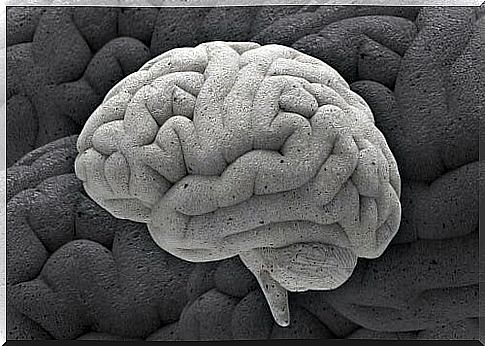Cognitive Reserve And Alzheimer’s

Alzheimer’s disease is a condition whose impact has made us speak of a global epidemic. The data tells us that one in 10 people over the age of 65 suffers from Alzheimer’s. Despite this, an intervention that can reverse its effects, cure it, has not yet been achieved.
Recent studies on the cognitive reserve and Alzheimer’s show that people have a say in the onset and development of Alzheimer’s disease (AD). Thus, in this article we will study the relationship between cognitive reserve and Alzheimer’s, which, among other things, could allow the symptoms of this condition to appear much later.
Martínez (2009) defines Alzheimer’s as a neurodegenerative disease that involves the presence of:
- Senile plaques : insoluble deposits of B-amyloid protein around neurons
- Neurofibrillary tangles : abnormal conglomeration of TAU proteins located within neurons made up of small intertwined fibrils.
As a result, a loss of neurons and synapses occurs, along with a decrease in cholinergic neurotransmission. This causes an alteration in brain activity that leads to reduced learning capacity, cognitive impairment and behavioral disturbances (Acarín, 2010). It seems, therefore, that we are at the mercy of neurogenerative diseases such as Alzheimer’s or Parkinson’s disease. That’s right?

Alzheimer’s: neurogenerative disease causing dementia
Before talking about the relationship between cognitive reserve and Alzheimer’s, it is important to understand this disease as dementia. Flint, Richardson and Martin (1998) define dementia as cognitive impairment that prevents or hinders activities of daily living. It is a brain syndrome originating from structural and neurochemical damage of varied etiology located in the cortical and subcortical structures.
This etiology is made up of disorders that can damage the cardiovascular or neurological structures of the brain. In turn, accidents can occur that promote the appearance of dementia. The most common etiology or cause in dementias is Alzheimer’s disease (AD), being located by epidemiological data as responsible for between 50 and 70 percent of dementia cases in the elderly (Aleixandre and Yuste, 2004 ).
The epidemiology of Alzheimer’s
This disease ranks as one of those with the greatest social and economic impact on health systems, families and patients ; as the functionality of the individual is affected and having a lower quality of life as a consequence (Ruiz, Nariño and Muñoz, 2010).
Data published in the World Report on Alzheimer’s Disease (2009) reveal the figure of 35.6 million people affected by this disorder and suggest that this number will double every 20 years. Thus, by 2020, the prevalence of AD will be approximately 70 million people worldwide.
The previously mentioned World Report on Alzheimer’s Disease (2009) also says that in European countries, such as France or Spain, a total of 850,000 people are estimated to be affected ; this number increasing each year by 220,000 more cases.
On the other hand, the decrease in the average life expectancy years is reflected in this population compared to the general population; in AD patients who are around 70 years of age, life expectancy is reduced by more than eight years.
The cognitive reserve and the brain reserve
Brain plasticity, neurogenesis … It should not be forgotten that the brain may have the ability to optimally tolerate the effects of a pathology (such as dementia) as a result of the experiences lived by the person, their occupation or their studies. For this reason, the relationship between cognitive reserve and Alzheimer’s is so relevant.
The cognitive reserve —RC— refers to a concept where the years of education would be an indicator of the brain’s ability to compensate for pathologies through the use of these alternative networks (Stern, 2002).
Other authors speak of a more passive brain reserve, where the most influential factors would be brain size and synaptic density, which would help to compensate for neurodegenerative diseases, such as AD. Certain variables can contribute to increase the brain reserve: number of neurons, density of their interconnections, strategies to solve problems …
What can they achieve?
Both concepts are developed as hypotheses due to the absence of a direct relationship between the degree of brain pathology and the clinical symptoms that appear. Therefore, the combination of both, the cerebral and the cognitive, make certain people more tolerant to the pathological changes that are glimpsed in the brain in certain diseases. They act as a protection factor.
There is also talk of a critical level from which, when the disappearance of the synapses reaches the threshold of the brain reserve, the initial symptoms of the pathology begin to appear, but not before. The greater the brain and cognitive reserves, the longer they take to appear.
This would explain why people with the same amount of AD histopathology can present dementias with different limitations: the brain would have a capacity for progressive activation of neural networks in response to increasing demands (Rodríguez and Sánchez, 2004).
However, it must be borne in mind that educational level is not the only thing that influences CR. Since it is a multifactorial construct, it also includes, among others, the place of residence or the degree of social relations in quantity and satisfaction (Mortimer and Graves, 1993).

What does it mean to have a high cognitive reserve?
Having a high CR means that clinical symptoms will begin to manifest when dementia is more severe, since it is a protective factor against the expression of the disease, although not against the pathology and its progression. In other words, CR slows down, but it doesn’t heal.
There are only hypotheses regarding the change in the speed of clinical progression; for example, when there is no longer any “CR” left, the demonstrations become apparent and the decline becomes much faster and more pronounced. If this were true, we could say that patients with high CR have a higher mortality than those with low CR, since the first symptoms take time to appear. On the other hand, degeneration occurs more quickly (Rodríguez and Sánchez, 2004).
Conclusions, is it necessary to cultivate the cognitive reserve?
The expression of clinical symptoms in patients with AD is related, on the one hand, to the person’s brain reserve ; on the other, with his cognitive reserve. The latter being a multifactorial construct, environmental variables may influence —education, intellectual activity— which, in turn, would promote the creation of synapses in certain brain areas, thereby modifying the brain reserve. Therefore, the person’s CR is based on both quantitative (organic, brain reserve) and qualitative aspects (Carnero-Pardo, 2000).
It seems clear that the cognitive reserve – which we can modify throughout our lives – together with the brain reserve – on which we have the least influence – would prevent Alzheimer’s symptoms from delaying their onset. Although this means that people with greater cognitive reserve would have more years free of Alzheimer’s, it also means a delay in diagnosis.









